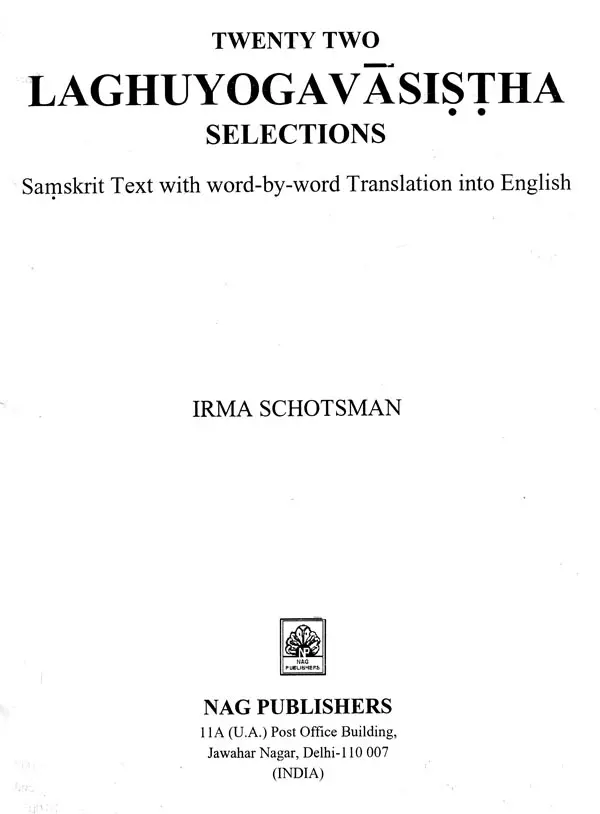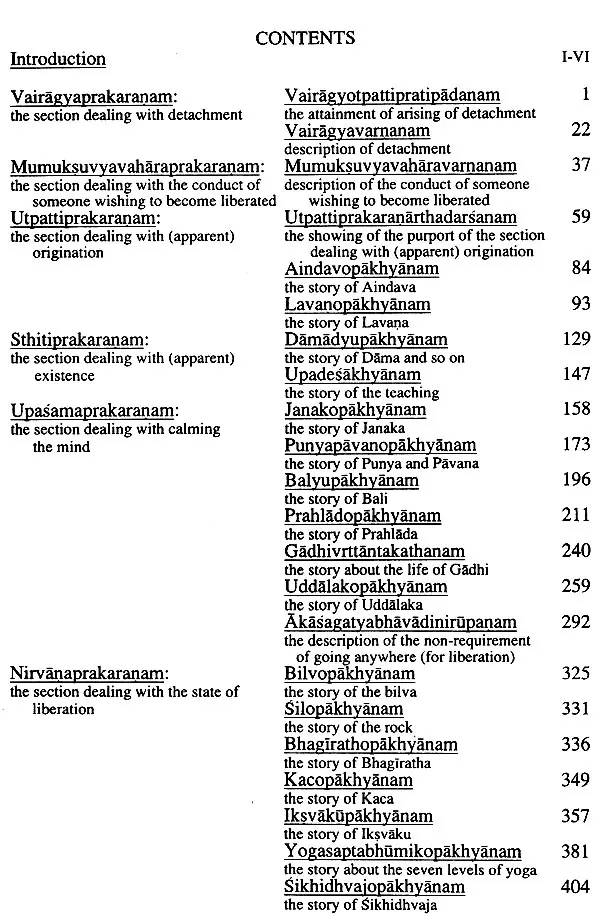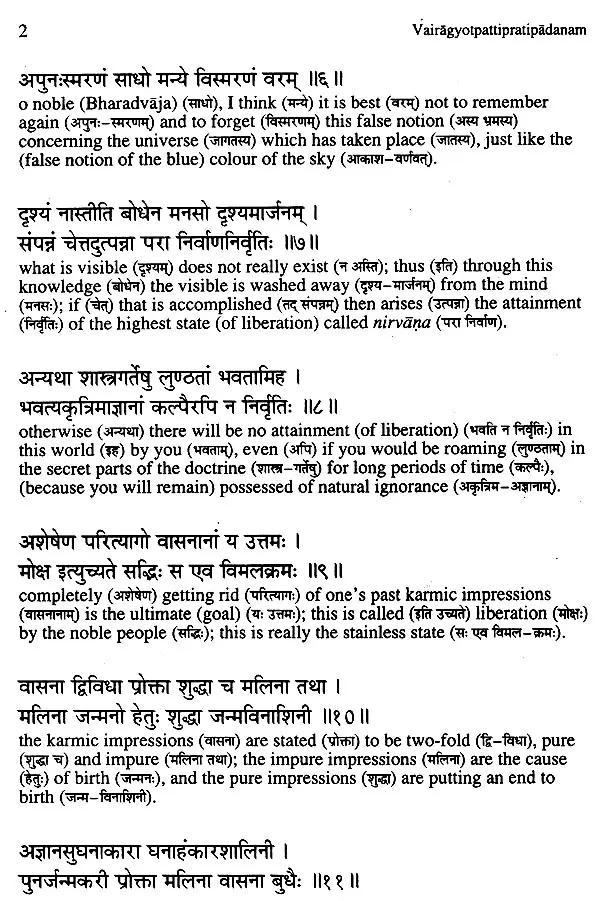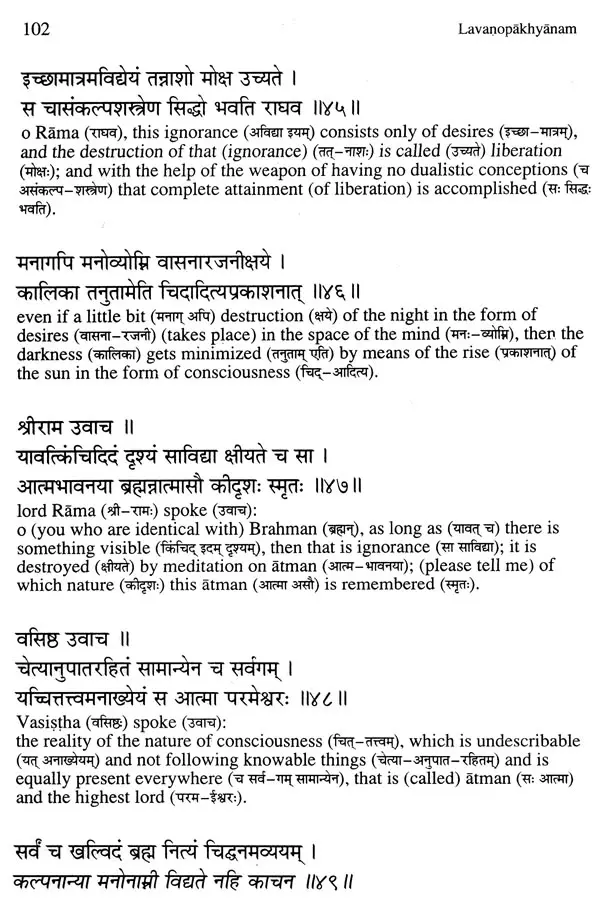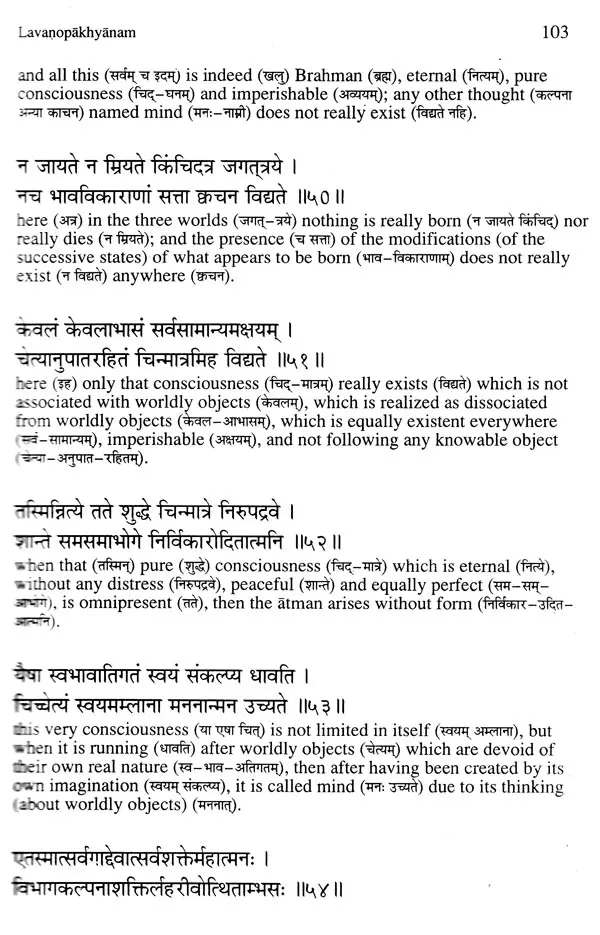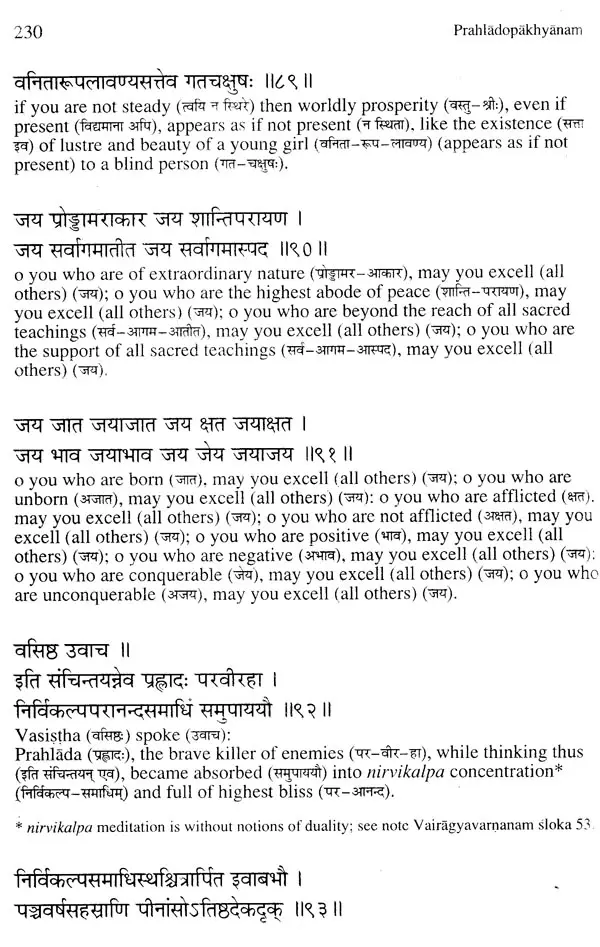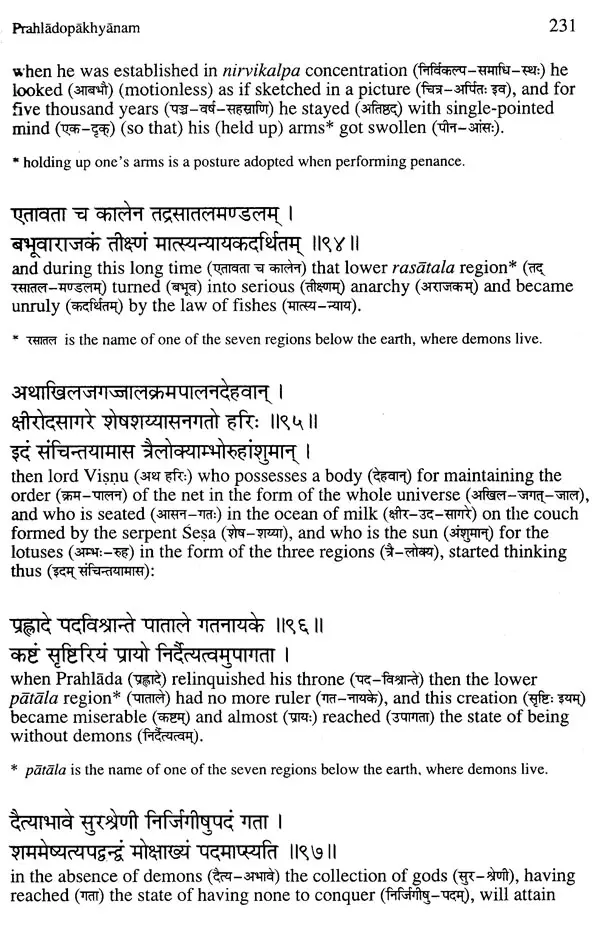About the Book The Yogavasistha is a remarkable, old Indian philosophical text composed in the Samskrit language. The word yoga applies to jñäna yoga only and the word väsistha refers to the teacher Vasistha who in this text answers questions of lord Rama. The original text, named the large or Brhat yogaväsistha, consists of more than 32,000 slokas òr verses. The authorship of this compilation is traditionally attributed to Rsi Valmiki. Some experts state that the first written version of the Yogaväsistha dates from the sixth century A.D. By the middle of the ninth century a summary has been made by one Abhinandana, a great scholar of Kashmir; this abridged version, the Laghuyogavasistha, contains about 5,000 slokas. The present word-by-word translation of more than 2500 slokas of the Laghu yogavāsiṣtha is especially meant for students with a basic knowledge of Samskrit and for those interested in refreshing their Samskrit knowledge, to help them to read philosophical Samskrit texts on their own. Others, interested in philosophy, may find it easy to train the eyes to read only the English translation, while skipping the Samskrit.
About the Author IRMA SCHOTSMAN (1935) from the Netherlands retired early from her job because of health problems. In 1985 she began studying Samskrit in Katmandu (Nepal). In 1990 she moved to Väränasi (Benares, India) where she continued her studies. Her word-by-word translation of Asvagosa's Buddhacarita was published in 1995. Her translation of Panditaraja Jagannatha's poem Ganga lahari with its commentary was published in 1999 and the word-by-word translation of selected chapters on 'Hanuman in Valmiki's Rāmāyaṇa' in 2002. These previous publications and the present word-by-word translation of selected chapters of the Laghu yogavāsiṣṭha are especially meant for students with a basic knowledge of Samskrit and for others interested in refreshing their Samskrit knowledge, to help them to read Samskrit texts on their own. However, all these translations may also be of benefit to those who do not know Samskrit but are interested in Samskrit literature, since it is easy to train the eyes to skip the Samskrit words in the translation so that one reads only the English.
Introduction The Yogavasistha is a remarkable, old Indian, philosophical text. The original Yogaväsistha text, also named the large or Brhat-yogavasistha. consists of more than 32,000 slokas or verses in Samskrit. The authorship of this compilation is traditionally attributed to Rși Valmiki, the sage who is also considered the author of the Ramayana. As regards the age of this work, let the experts theorize about this. One should keep in mind that India has a very old tradition of oral transmission. Some experts state that the first written version of the Yogavasistha dates from the sixth century A.D. By the middle of the ninth century a summary of the large version or Brhat yogavasistha has been made by one Abhinandana, a great scholar of Kashmir, by omitting extensive descriptions, so that the quintessence is extracted; this abridged version is called the small or Laghu-yogavasistha which contains about 5,000 slokas. This present word-by-word translation of 2567 slokas of the Laghu-yogavasistha is especially meant for students with a basic knowledge of Samskrit and for others interested in refreshing their Samskrit knowledge, to help them to read philosophical Samskrit texts on their own. However, this translation may also be of benefit to those who do not know Samskrit but are interested in philosophy, since it is easy to train the eyes to skip the Samskrit words in the translation so that one reads only the English.
Book's Contents and Sample Pages
